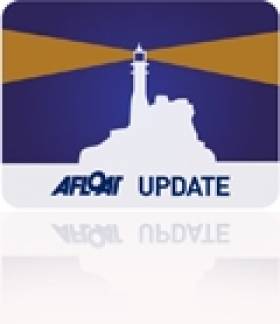Displaying items by tag: Marc Guillemot
Safran is One of Six IMOCA 60s to Tackle the Fastnet Race
There have never been as many entrants before for what is one of the world's oldest races. 323 crews will be setting out from the Royal Yacht Squadron in Cowes (Isle of Wight-GB) with a finish in Plymouth after rounding the Irish lighthouse and completing the 608 miles of the race course, in what are often windy conditions. The Fastnet, built in 1854 on the Carraig Aonar, the lone rock in Gaelic, was the final part of the European coast that the emigrants saw as they made their way to the United States in steamers... Organised every other year in odd years by the Royal Ocean Racing Club (RORC), the 2011 Rolex Fastnet Race is the 44th edition of the race, with the record time of 1d 20h 18' held by the monohull ICAL Leopard since 2007...
Time to practice
For Safran which has just completed a training period in La Trinité-sur-Mer after smashing the Round Britain and Ireland record, the Rolex Fastnet Race is above all a taster before the main event of the season, the Transat Jacques Vabre: "The five other IMOCA 60 boats will be racing double-handed, so this is a good way to see how we can do against the latest generation like PRB, Cheminées Poujoulat, Virbac-Paprec3, but also Hugo Boss and DCNS 1000. After our training in La Trinité-sur-Mer, we needed a complete change with a technical course with a range of wind, sea and tidal conditions," explained Marc Guillemot, who arrived on the Isle of Wight on Wednesday.
The 608-mile course tests not only performance capabilities on coastal courses, but also the sailors' abilities in an ocean race. It requires a lot of preparation as well as a good speed potential. "The start is to take place with a North-westerly wind blowing between 10 and 15 knots with squalls likely in the Channel Approaches. In the Celtic Sea, a front should be passing over before the Fastnet Lighthouse and then there are likely to be high-pressure conditions becoming established with an easterly wind accompanying them all the way to the finish in Plymouth. The race will essentially be an upwind affair in moderate winds locally reaching 15-20 knots... They can look forward to at least two days at sea," explained Sylvain Mondon of Météo France.
Finding their feet
Marc Guillemot and Yann Eliès know 60-foot IMOCA boats and double-handed sailing well, having already sailed together in these difficult and sometimes rough seas. That was the case in the Solitaire du Figaro, at the finish or start of transatlantic races and indeed during the Round Britain and Ireland trip. "The Rolex Fastnet Race is a rehearsal for us, a mock exam, a chance to try some double-handed racing. As Safran is a demanding boat and this year's race looks like being rather rough, it means it is going to be similar to what we can expect at the start of the transatlantic race with the exit from the Channel and the voyage across the Bay of Biscay. I raced in this event in 2007 sailing double-handed: it was my first chance to get to know IMOCA 60 sailing and it was an excellent way to rehearse. The course itself is something we know well having taken part in the Solitaire du Figaro: The Fastnet Lighthouse is one of the most beautiful sights from the sea there is in Europe..." explained Yann Eliès.
In the middle of the choppy waters of the Solent, the stretch of water separating the Isle of Wight from the mainland, more than 300 boats will be setting off with a series of starts scheduled from 1200 hrs local time on 14th August. Safran and the five other Imoca 60 boats taking part will quickly be out there with the serious stuff facing the opposition: Marc Guillemot and Yann Eliès will have to find their feet very quickly ...





























































